Posted by Elena del Valle on May 18, 2012
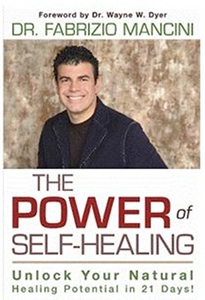
The Power of Self-Healing book cover
Photo: Teszler PR
Half of ill people if left alone will heal on their own. So believes a chiropractic and book author on the topic. Because traditional western medicine has focused on external healing most people are unaware of the power of their own bodies, he says.
Fabrizio Mancini, president, Parker College of Chiropractic, is convinced from personal experience and experience with patients that the human body has a built-in capacity to heal itself and that improving the body’s ability to heal can be controlled by each individual.
In The Power of Self-healing: Unlock Your Natural Healing Potential in 21 Days (Hay House, $24.95), published in 2012, the bi-lingual speaker explains his health theories and outlines his ideas on how readers can tap into their body’s own healing powers through: simple substitutions of daily diet-foods that he believes can contribute to a body’s ability to self-heal, the latest supplements he thinks can strengthen the body’s self-healing capacities, new insights into how physical activity floods the body with natural healing substances, the latest non-drug, non-invasive technologies he thinks can contribute to health, the power of the mind and spirit to heal the body, self healing case studies and his suggestions for a 21-day self-healing program.
The 280-page hardcover book is divided into four main parts Physical Self-Healing, Emotional Self-Healing, Spiritual Self-Healing and 21 Days to Self-Healing and 14 chapters. At the beginning of the book, Mancini, an immigrant from Colombia, shares a little about his arrival in the United States and why he decided on his path as a chiropractic and educator in life. In his opinion there is a basic difference between healing and curing; and there are three types of healing: physical, emotional and spiritual.
Exercise and diet can be good first steps toward self healing, according to the Texas resident. He dedicated the first chapter of the book to foods and the second chapter to things that he considered to have a detrimental effect or Anti-Healers. He discusses nutritional supplements, exercise and other forms of healing in the following chapters. Next he discusses the power of thoughts, emotions and in self-healing. He then addresses the role of creativity, forgiveness, gratitude, love including the importance of hugs and spirituality. The book ends with his recommendations for a 21-day healing program that includes a menu, supplements, exercise and a positive suggestion for each day.
A graduate of Parker College himself he is the co-author of Chicken Soup for the Chiropractic Soul and The Well Adjusted Soul; and author of Four Steps for Living a Fabulous Life.
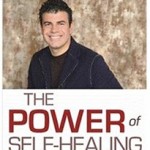
Click to buy The Power of Self-Healing
Comments:
Filed Under: Books
Posted by Elena del Valle on May 11, 2012
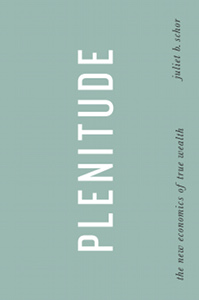
Plenitude book cover
Photos: Julietschor.org
Does owning things bring happiness? Does having the latest technological gadget and consumer goods satisfy us? Many of us think they do, at least in part. Juliet Schor, a sociology professor at Boston College, is convinced having time, information, creativity and community in abundance can be more rewarding than the conventional goods we have focused on to date. She proposes a change in attitude and behavior away from consumerism that she hopes will lead to an improvement in social, economic and environmental conditions nationally.
In Plenitude The New Economics of True Wealth (The Penguin Press, $25.95), her third book, she explores the concept of living a life scarce in conventional consumer goods and rich in other resources that emphasize nature, community, intelligence and time as a few pockets of people across the country were striving to do when she wrote her book.
In addition to the knowledge, work and experience she has collected over the years, writing the book required 16 months. The 258-page hardcover book published in 2010 is divided into five chapters: Introduction, From Consumer Boom to Ecological Bust, Economics Confronts the Earth, Living Rich on A Troubled Planet, and the Economics of Plenitude. In the book, she explains that the concept is not one of sacrifice.

Juliet Schor, author, Plenitude
Instead she believes the proposed paradigm that focuses on innovation, macroeconomic balance and multiple sources of wealth will lead to greater well-being than the previous approach which, in her opinion, has led to the decline of economic and natural environments.
“My thinking has evolved in this way: The long term stagnation, high unemployment that I predicted is being borne out. What I didn’t expect was how difficult it is to get the mainstream conversation around to shorter working hours,” said Schor by email when asked about her reflections on the subject after the publication of the book. “I suppose I am also feeling more pessimistic about a government response to climate change.”
The author believes that there is growing interest among Hispanics and African-Americans to the ideas in the book. Some of the community innovations are happening in places like the inner-cities of Cleveland and Detroit, she pointed out via email. At the international level she is aware of interest among Indians in India in some of the lifestyle changes she favors such as organic food and low-impact lifestyles.
Schor is studying the concept of working environmental sustainability and its relation to Americans’ lifestyles and the economy as well as the rise of a conscious consumption movement. She has been a consultant to the United Nations, the World Institute for Development Economics Research, and the United Nations Development Program. She is a co-founder and co-chair of the Board of the Center for a New American Dream, a national sustainability organization.
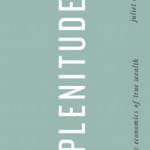
Click to buy Plenitude
Comments:
Filed Under: Books
Posted by Elena del Valle on May 4, 2012

The American Marketplace book cover
Television is the source of news for almost half of Americans, 22 percent of Americans rely on the internet for news and 18 percent of the population looks to print media for news, according to the 10 edition of The American Marketplace: Demographics and Spending Patterns (New Strategist, $89.95). The editors of the book used government sources to outline a population profile of the United States in one volume. The book’s main sources of information are: Census Bureau, Bureau of Labor Statistics, National Center for Education Statistics, National Center for Health Statistics, and Federal Reserve Board.
The 611-page softcover book published in 2011 features hundreds of tables in 11 chapters covering attitudes, education, health, housing, income, labor force, living arrangements, population, spending, time use, and wealth. Accompanying the tables is analysis on the meaning of the data and summary conclusions reached by the publisher’s staff. For example, at the beginning of the book it says that in recent years overall happiness (though not marital happiness) has declined and many people are distrustful of others.
People believe hard work leads to success although fewer people identify with the middle class, the publisher’s analysts concluded in the book. The Housing Trends section indicates most people live in single family homes and many people live near open space and woodlands. In the Income Trends analysis it says nationwide there is more income inequality, all racial and ethnic groups have lost ground, homeowners between 45 and 54 years of age have the highest incomes, while income peaks in middle age.
The book includes the latest attitudinal data from the 2010 General Social Survey and the chapter on time use examines data from the 2009 American Time Use Survey. There is new data on the changing housing market and demographic profiles of those who own or rent their home; and up-to-date income and labor force data and 2010 census data of the Asian, black, and Hispanic populations. The spending chapter examines how spending patterns may be changing.
New Strategist Publications publishes other demographic data titles about consumers (for a recent example, see Book outlines Hispanic population major characteristics)

Click to buy The American Marketplace
Comments:
Filed Under: Books
Posted by Elena del Valle on April 27, 2012

Government Control of News book cover
Photos: News & Experts
Many people think there is complete freedom of expression for media in the United States. A former executive at the NBC legal department is concerned about what he describes as a “looming threat to free speech in the United States.
Corydon B. Dunham, who was NBC-TV’s legal counsel for 25 years, believes the proposed new Localism, Balance and Diversity Doctrine could eventually also affect news on the internet. According to him, the Federal Communications Commission (FCC) is reportedly planning to transfer the broadcast spectrum used by local television to the Internet hoping to convert it into our country’s main communications platform, and the agency has started to regulate the internet.
In his 282-page softcover book, Government Control of News: A Constitutional Challenge (iUniverse, $21.95), Dunham discusses the evolution of government control of television news and the Fairness Doctrine. The book, published in 2011 and the result of a study initiated at the Woodrow Wilson International Center for Scholars at the Smithsonian Institute, examines the history of the Fairness Doctrine, the rules by which the federal government regulated TV journalism. Similar rules had governed radio news since 1934 and were applied to TV in 1949 by the Federal Communications Commission.
“TV was a powerful new medium and there were only a few broadcast stations in many communities. It was thought that this gave unusual power to station and network owners,” Dunham explains. “The government justified the Fairness Doctrine as a way to ensure stations aired opposing viewpoints on issues.”
He explains in the book that in 1987, the FCC unanimously revoked the Fairness Doctrine, with court approval, after determining the doctrine had deterred news reporting on controversial issues, and had been used on multiple occasions to suppress viewpoints and help officials pursue their own political objectives. It took Congress two decades but it seems legislators are ready to revive the Fairness Doctrine in the form of the Localism, Balance and Diversity Doctrine, proposed in 2008.
“It has many of the same characteristics of the old Fairness Doctrine and can be expected to have similar results,” said Dunham. “News broadcast by television stations would have to meet government criteria for ‘localism’ – local news production and coverage – as well as a regulatory balance and diversity of viewpoints. A three-vote majority of five FCC commissioners at a central government agency would make local news judgments and override those of thousands of independent, local TV reporters and editors.”

Corydon Dunham, author, Government Control of News
A local board at each station would monitor programming, including news, and recommend against license renewal if the station did not comply with FCC policy; in 2011, the FCC-sponsored Future of Media Study recommended the localism doctrine proceeding be ended; and the present chief of the White House regulatory office recommended that the government regulate news to advance its political and social objectives, according to Dunham.
“The president, Congress and the FCC have also agreed to transfer the entire broadcast spectrum (currently used by TV stations) to the Internet over the next 10 years. If the localism doctrine is adopted, it could apply to the Internet and its participants as users of the FCC-controlled spectrum.”
Dunham is convinced that requiring journalists to comply with a central government agency’s policy on how to report the news will impede those journalists from being free and independent.
“As the Fairness Doctrine broadcast history shows, the threat of loss of license will deter station news coverage, particularly of controversy, and the public will lose news and information. If the broadcast press is not free and independent of government, it cannot act as a watchdog for the public, which is its constitutional role.”
The book is divided into seven chapters: Television Journalism Begins, Regulation of Television News Content Upheld by the Supreme Court, How FCC Regulations Suppressed News and Speech, Congressional Investigations and Censorship, Executive Branch Censorship, The FCC Revokes the Fairness Doctrine, and New Government Threats; and four appendices.

Click to buy Government Control of News
Comments:
Filed Under: Books
Posted by Elena del Valle on April 20, 2012
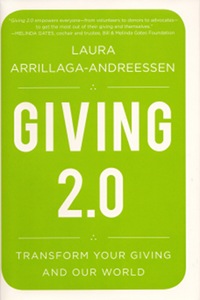
Giving 2.0 book cover
Giving can be challenging I discovered last year when searching for a home for a small grant. Potential recipients often balked when asked to share basic information about their organization’s mission and leadership. Those who were willing to respond to initial vetting queries required one year or longer before they were able to apply the monies and others still wanted to receive funding with no strings or almost no strings or reporting requirements attached. What is an individual wishing to donate to a good cause while ensuring the monies reach a responsible recipient matching the giving goals to do?
Laura Arrillaga-Andreessen, author, Giving 2.0: Transform Your Giving and Our World (Wiley’s Jossey-Bass, $25.95) offers some answers in her book. As a young adult she was inspired to devote much of her time to philanthropy by her parents. Although she felt “frustrated and isolated” following the death of her mother at the beginning of her journey of giving she pressed forward to a solution by creating an organization to assist individual donors.
Eventually her efforts led her to write the book published October 2011. Her main goal in writing the book was to assist readers who already had decided to give on how to do so effectively. She defines giving as a donation of any amount of money, skills, networks, expertise or time. Anyone who gives anything is a philanthropist, she says in the book.
In the book, Arrillaga-Andreessen refers to a website related to the book in which she promises additional information about the issues she discusses in Giving 2.0 and updates on the topic. She identifies the sections of the book for which she has information on the website with a “Giving 2.0” icon. According to the information in the book, the author plans to donate all the royalties resulting from the sale of the book to philanthropic organizations.
The 312-page hardcover book is divided into nine chapters: Giving Yourself, Connecting the Drops, Charting A Course, Determining A Destination, Game Changers, Something Ventured, Changing Minds, Family Matters, and In the Trenches; and four appendices.
Arrillaga-Andreessen, president, Marc and Laura Andreessen Foundation is a director of the Arrillaga Foundation and a board member of Sand Hill Foundation, Stanford University School of Education, SIEPR (Stanford Institute for Economic Policy Research), Women’s Health at Stanford Medical Center, and an Advisory Council Member of the Global Philanthropy Forum, according to her biography. She is also a contributing author of Local Mission, Global Vision – Community Foundations in the 21st Century.

Click to buy Giving 2.0
Comments:
Filed Under: Books
Posted by Elena del Valle on April 13, 2012

The Cancer Dancer book cover
Photos: San Pedro Productions
“You have breast cancer.” Those dreaded words are heard by many women in the United States and world wide. Among them was Patricia San Pedro, a Miami publicist. With the help of friends and loved ones she kept track of her four year journey of treatment and recovery. She shared photos, her findings and 400 patient-to-patient tips in The Cancer Dancer Healing: One Step at a Time ($14.99), a 148-page softcover book self published in 2011. The book was among the items in this year’s 54th Annual Grammy Awards Gift Bag.
“From the moment I was diagnosed, I felt a need to document my healing journey. My hope and goal was to share as much information as I could, in order to ease the journey for others who would follow. My book include more than 400 patient to patient tips that I gathered in the midst of my journey. My hope is also to inspire others to see the blessings and accept the gifts that come from every situation in our lives…even the difficult ones,” said San Pedro by email when asked why she wrote the book.
She set up English, PositivelyPat.com, and Spanish language, PatriciaPositiva.com, websites and found volunteer translators to assist her in spreading the message to speakers of other languages. Not content with just publishing a book the positive thinker approached the Discovery Channel to share her video journal and message with a television audience. The 60-minute documentary, produced by Discovery Channel, Imagina U.S. and the author, aired on Discovery Familia in the United States and Discovery Home and Health in Latin America October 2011.

Patricia San Pedro, author, The Cancer Dancer in 2010
“I am on unofficial nonprofit. Everything I’m doing is a public service, but I haven’t formed an official non profit yet. I’m actually hoping to raise funds so I can keep doing more of this. It’s not easy to fund it all yourself. I’ve done lots with volunteers. Right now I need sponsors to be able to distribute the book for free to patients. And to print the Spanish and Portuguese versions, which are only in ebook format at the moment. I receive requests every single day asking for the book in a variety of languages,” said San Pedro when asked about funding for her projects.
San Pedro, a three-time Emmy Award winner, is owner of San Pedro Productions. She is also a photographer and contributing author of Dish & Tell: Life, Love and Secrets written with five other women.

Click to buy The Cancer Dancer
Comments:
Filed Under: Books
Posted by Elena del Valle on March 23, 2012
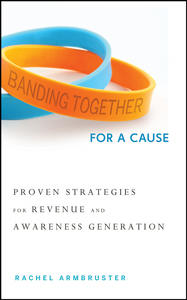
Banding Together for A Cause book cover
Photo: Newman Communications, Inc.
Nonprofit organizations are often in need of funding and public relations on a shoestring. Drawing the attention of the public and potential donors to their cause or organization requires time, effort and the right mix of positioning and branding. Ribbon and wrist band campaigns have become a common way to bring people together and catch attention in an easy and affordable way. For many people wearing wrist bands for a cause or as a reminder of something important to the wearer gained great momentum years ago thanks to the Lance Armstrong Foundation.
Lance Armstrong, the world famous cyclist, brought sympathy and attention to cancer and his race by wearing a yellow wristband in one of the best known awareness campaigns of the past decade. The Livestrong campaign, created to raise money for the Lance Armstrong Foundation and cancer research, reached its goal within six months and has raised more that $500 million for the cause.
“If I hadn’t personally been involved in the campaign. I almost wouldn’t believe it,” said Rachel Armbuster, former director of development for the Lance Armstrong Foundation (2000-2006), overseeing all fundraising and managing the Nike relationship that created the Livestrong gel bracelet campaign.
In her recently published book, Banding Together for a Cause: Proven Strategies for Revenue and awareness Generation (Wiley, $45), Armbuster set out to provide insights and pose questions to guide others who wish to embark on their own yellow wristband journey. Through her efforts she hoped to assist others seeking ways to generate funding through partnerships.
The 232-page hardcover book is divided into nine chapters: The Importance of Time in Moving Your Mission Forward, Reflecting the Essence and Spirit of Your Organization Through Banding, The Right Partnerships, Pinpointing Experts and Using Their Strenghs, The Role of Strategic Planning in Your Mission’s Success, Assembling the Perfect Team, Strategies for Integrating and Mobilizing, Creating Feedback Mechanisms, and What It Takes to Be a Visionary.
The author believes better branding can be accomplished by following the process, focusing on improvement and having passion for the relationships that pave the way for success. It is important to be a leader and to be discriminating in your use of resources, she says in the book.
Armburuster is an executive nonprofit strategist and founder for Armbruster Consulting. According to her bio, she has provided consulting services to hundreds of organizations seeking to improve goals actualization, program management, development and training, department integration, or corporate partnership program development. She lives with her husband and two sons in Austin, Texas and serves on the Fertility Advisory Committee at Livestrong.
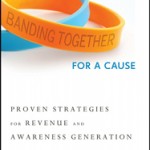
Click to buy Banding Together for a Cause
Comments:
Filed Under: Books
Posted by Elena del Valle on March 16, 2012
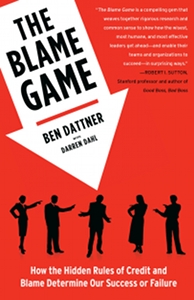
The Blame Game book cover
Photos: Free Press Publicity, Seth Dinnerman
Studies at the Center for Creative Leadership indicate one of the reasons managers fail is because they lack good people management skills. Although it’s good to know someone has studied the issue for many employees and some managers this may be well known information. Ben Dattner, Ph.D., a New York City organizational psychologist and workplace consultant, is convinced that there is high pressure in organizations to assign credit or blame and that this process causes conflict and managerial problems. The best way to win that game is to refuse to play, according to Dattner.
In The Blame Game: How the Hidden Rules of Credit and Blame Determine Our Success and Failure (Free Press, $16), published in hardcover in 2011, Dattner examines the issue. Last month, the book was published first the first time in a 245-page paperback edition.

Ben Dattner, Ph.D., author, The Blame Game
The author identifies 11 types of people he believes are the most common players of the blame and credit game: Bold, Cautious, Colorful, Diligent, Dutiful, Excitable, Imaginative, Leisurely, Mischievous, Reserved and Skeptical.
When credit and blame are well managed people are willing to experiment, learn and grow; when they are poorly managed people shut down, become demotivated and concerned with protecting themselves, according to the author. In the book, he examines the credit and blame style of management and proposes ways in which individuals and organizations can make credit and blame play a positive role to drive growth and change instead of a negative force that drives stagnation and failure.
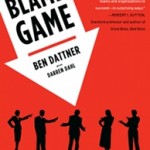
Click to buy The Blame Game
Comments:
Filed Under: Books
Posted by Elena del Valle on March 9, 2012
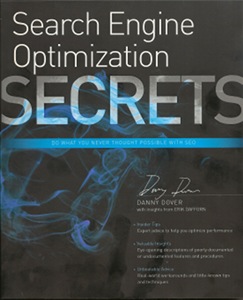
Search Engine Optimization Secrets book cover
Photos: Erik Dafforn, Danny Dover
As online portals gain momentum and the digital world around us continues to morph so fast it’s hard to know where it will settle one priority remains constant for many: maximizing their online presence through search engine optimization strategies. How to do that most effectively within a reasonable budget and in a timely fashion is the topic of much debate and many books.
There are a number of titles for do-it-yourself types and beginners and myriad articles that outline the basics. For those who already understand the essentials of search engine optimization, commonly referred to as SEO, a specialized title may be helpful. Search Engine Optimization Secrets (Wiley Publishing, $34.99) by Danny Dover with insights from Erik Dafforn, a 435-page softcover book written for those who already have a basic understanding of search engine optimization issues and want to improve their knowledge and for consultants who want to sell SEO services, is one such book.

Erik Dafforn, co-author, Search Engine Optimization Secrets
“From various studies, we believe about 90 percent of the Fortune 1000 have search programs in place, but we also believe the success rates fluctuate wildly, depending on whether the brand simply defends their ‘branded’ queries, or whether they aggressively pursue non-branded search traffic as well. Larger brands, those that can afford significant TV and radio reach, often have a search budget that represents about 10-25 percent of their overall marketing spend, while smaller (non-TV) clients tend to have a greater percentage devoted to search, anywhere from 25-75 percent of the overall marketing budget,” said Dafforn by email in response to a question about the percent of Fortune 1,000 companies that allocate resources to search engine optimization. “Their budgets for paid and organic search grow as they realize that budgets for other forms of advertising, such as yellow pages, outdoor, and direct mail, are often unable to match the measured results and offer the same ROI as search does.”
Published in 2011 the book is divided into 14 chapters and one appendix: Understanding Search Engine Optimization, Relearning How You See the Web, Picking the Right SEO Tools, Finding SEO Problems, Solving SEO Problems, SEO Best Practices, The SEO Consulting Process, Comprehensive Site Audit (Informational Website), Comprehensive Site Audit (E-Commerce Website), Understanding the SEO Industry, Search Engine Verticals, Optimizing for Alternative Search Engines, SEO Resources and Test, Test, Test.

Danny Dover, author, Search Engine Optimization Secrets
“Search Engine Optimization (SEO) is a fundamental strategy for any business that offers a product or service that can be researched or purchased online,” said Dover by email in response to a question about how knowledge of search engine optimization strategies is beneficial to business executives. “While SEO as a strategy takes a long to fully implement, it is essentially free and fantastic for driving conversions.”
The authors discuss SEO issues for practitioners in detail, outlining steps and providing examples of reports and tools of the trade. Dover is the former lead of SEO at SEOmoz.org. Daforn is executive vice president and director of Organic SEO for Intrapromote.
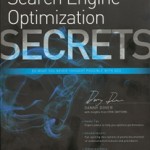
Click to buy Search Engine Optimization (SEO) Secrets
Comments:
Filed Under: Books
Posted by Elena del Valle on March 2, 2012
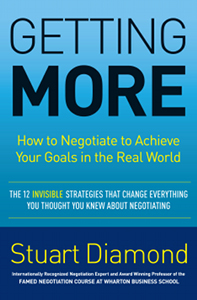
Getting More book cover
Photos: Sullivan and Partners
Stuart Diamond, a Pulitzer Prize Winner and Wharton School of Business professor who taught negotiation to 30,000 people in 45 countries, believes obtaining the most out of a negotiation varies with the situation. Although it may sometimes seem counter intuitive, good negotiations are about more than the familiar win-win or win-loose approaches, according to Diamond. In Getting More: How to Negotiate to Achieve Your Goals in the Real World (Crown Business, $26), a 400-page hardcover book published in 2010, Diamond outlines his situation specific approach to negotiation in 16 chapters.
Based on years of personal experience and the experience of his students, including 400 anecdotes in the book, he believes that: focusing on your goals, being knowledgeable about the other party and making human contact is key to success; emotion destroys negotiation; preparing, even briefly, is essential; dealing with the decision maker is necessary; acknowledging the other party’s power and position may be helpful; an incremental strategy can be most productive; being yourself and transparent is conducive to good negotiations; constant communication is powerful; identifying the source of the problem and converting it into an opportunity can lead to getting more in the negotiation; celebrating differences can be conducive to better negotiations; using power in a negotiation may harm a relationship, and result in retaliation and loss of credibility.

Stuart Diamond, author, Getting More
To get more when negotiating he relies on emotional sensitivity, clear goals, relationships, being incremental and viewing each situation independently; trusting while insisting on commitments in return. According to his biography, Diamond has advised executives from Google, Microsoft, JP Morgan, and Prudential as well as managers from more than 200 of the Fortune 500 countries.

Click to buy Getting More
Comments:
Filed Under: Books




































